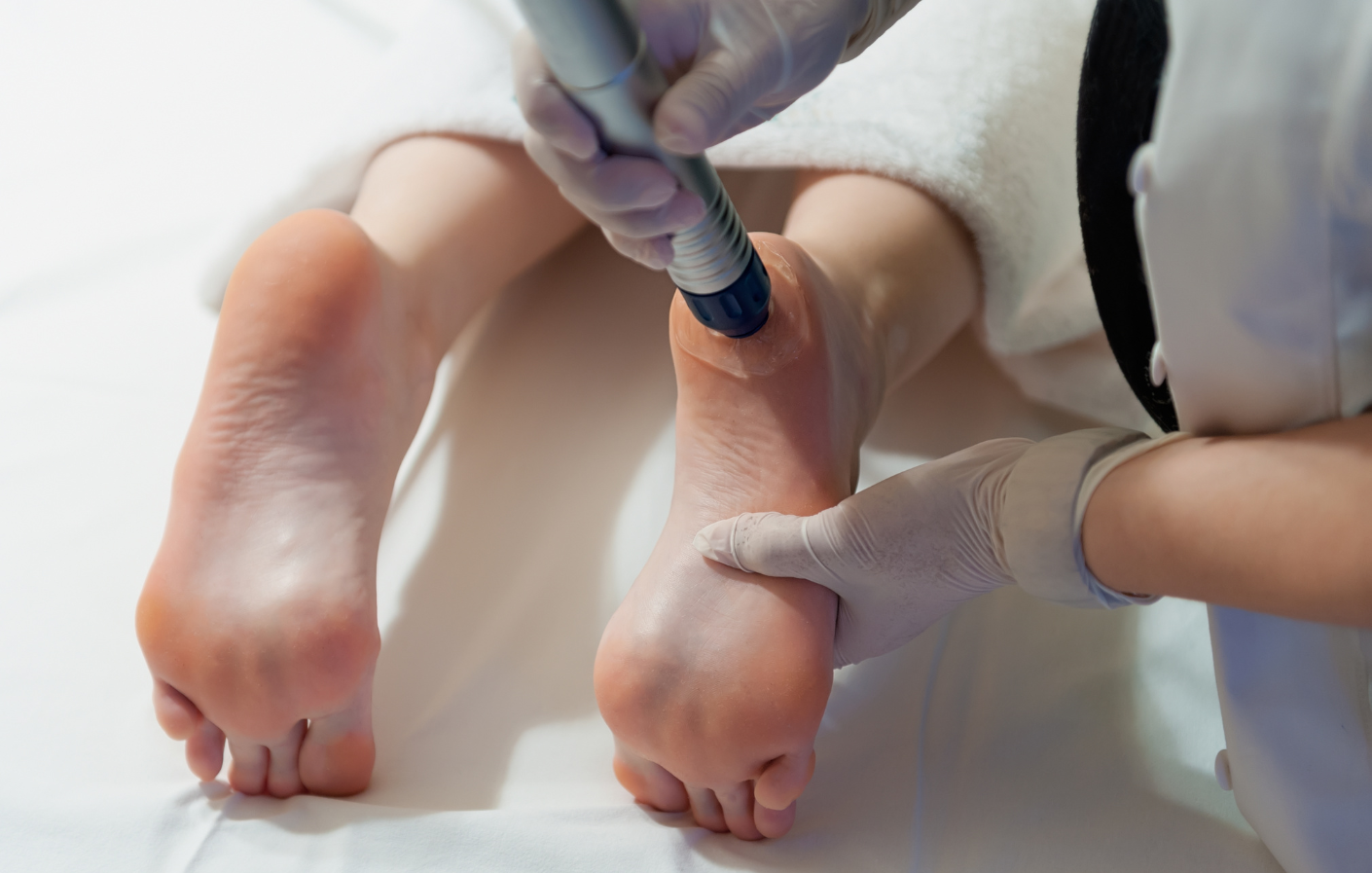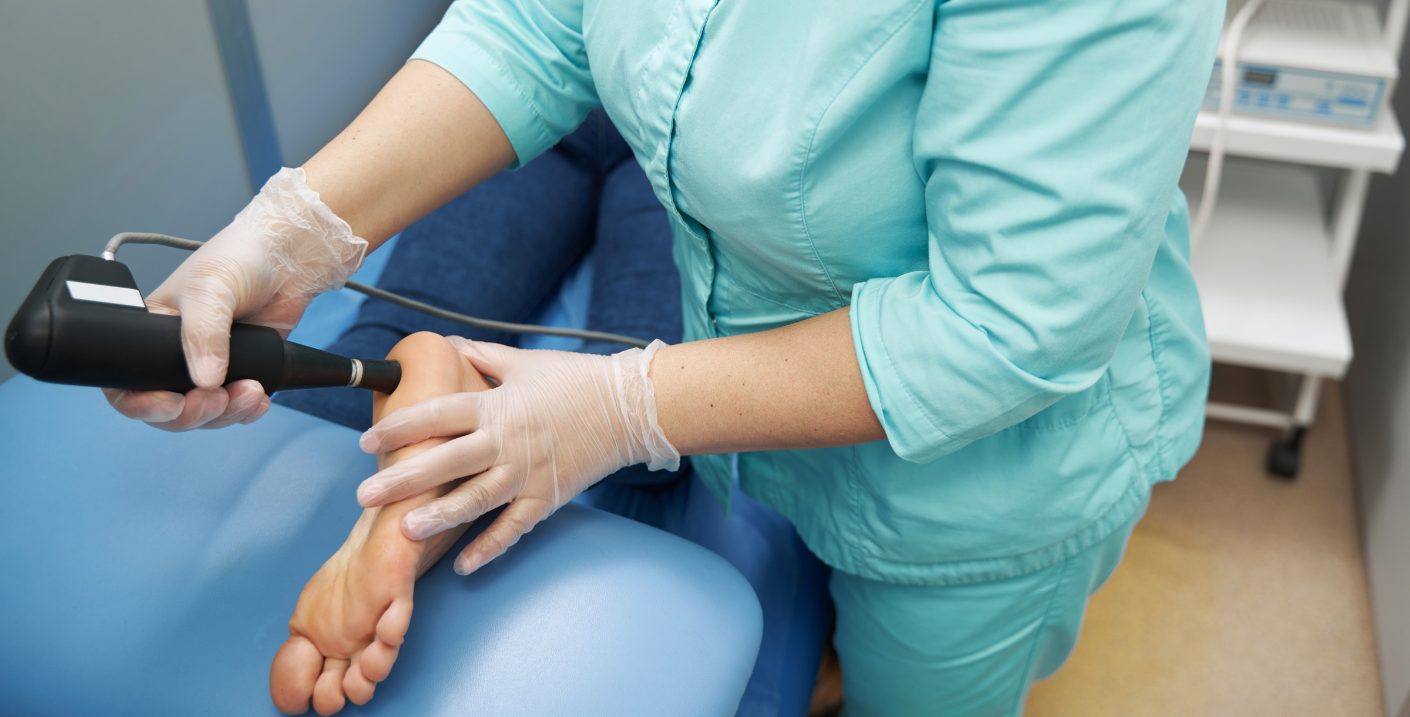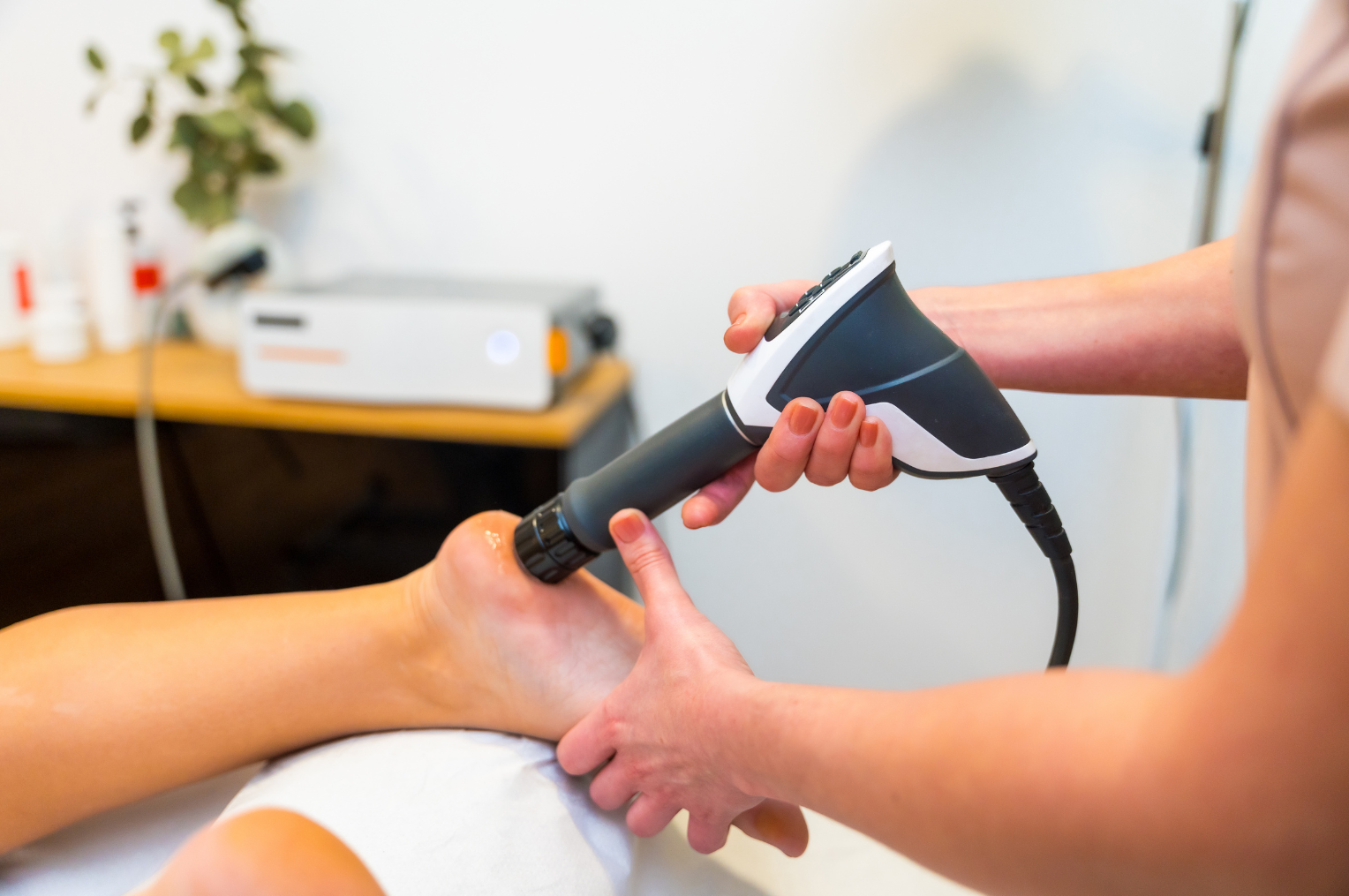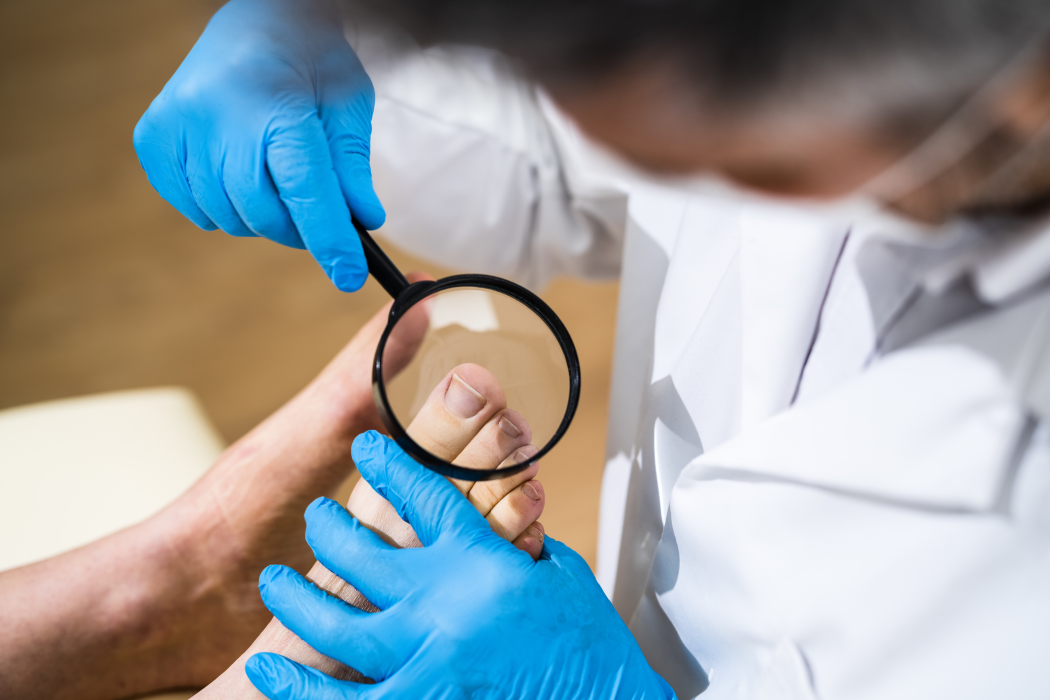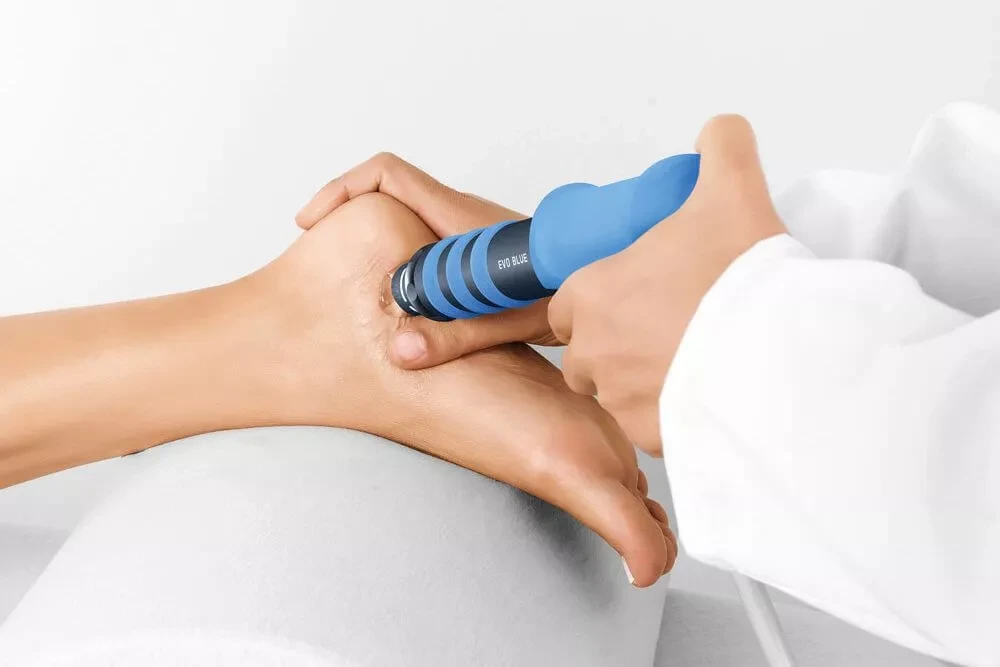PACT Led Fungal Nail Treatment
Frustrated and dissatisfied with fungal nail treatment creams not giving you the results you want? We’re pleased to introduce PACT at Perform Podiatry – a safe, effective and painless solution for even stubborn fungal nail infections.
What Is PACT?
PACT is a treatment for nail fungus, and stands for Photodynamic Antimicrobial Therapy. Completed by your podiatrist, it uses a high-powered LED light paired with a unique gel that is sensitive to the LED light. Together, they produce antifungal effects that kill the nail fungus (and fungal spores that spread the infection). Better yet, they do so without causing any damage or harm to the healthy nail or the surrounding skin.
Research on the effects of PACT has found success rates of up to 100% for mild to moderate infections and 63.5% for severe infections. This is significantly better than the range of traditional treatments currently on the market (which can be as low as 7% in some cases).
Previously tried other nail fungus treatments without any results?
Good news – studies also showed that many of those who did not respond well or see notable benefits when using other forms of antifungal treatments (including oral antifungal medications) had a good response to treatment with PACT. If you’re still struggling with infected toenails that look discoloured or moth-eaten, even after you’ve tried treating them in the past, PACT could be the answer you’re looking for.
Benefits Of The PACT Antifungal Treatment
Our patients are finding so much value in the PACT treatment.
- It is effective against a wide range of fungal species, and has shown to be effective against fungal strains that are resistant to conventional antifungal drugs. This means you have a higher chance of success, even if you’re battling a tricky fungus or traditional treatments haven’t worked in the past.
- It is not invasive, only involving the application of a photosensitising agent followed by exposure to light. This keeps you maximally comfortable and safe.
- It only targets the infected area instead of risking the tissues surrounding the nail.
- It has a lower risk of side effects compared to oral antifungal medications, meaning that it’s more suitable for a greater range of people. As it’s not medication you ingest, there’s also no risk of drug interactions from other medicines that you’re taking.
- It leads to the rapid destruction of fungal cells, providing quicker relief from symptoms. This makes it good for even severe fungal infections.
- It is effective against a wide range of fungal species, making it a versatile treatment option for various types of fungal infections.
- It involves the physical destruction of fungal cells, which reduces the likelihood of resistance development compared to conventional antifungal drugs, which often face resistance issues.
- It can be combined with other antifungal treatments to enhance overall efficacy.
- It makes a genuine difference in improving our patients’ quality of life (and comfort).
How Does PACT Work?
While it may look like a laser, PACT actually uses phototherapy that involves two components: a photosensitiser, and a light. The photosensitiser is a blue gel that binds to the wall of fungal cells, making them vulnerable to the PACT light. When the light is shone onto the photosensitiser (at a specific wavelength), it generates oxygen molecules that break down the cell wall of the fungal cells.
What Does A PACT Appointment With Us Look Like?
Here’s a breakdown of your PACT treatment process at our Remuera clinic, located inside the One Health medical centre. You can start by booking your first appointment here.
- Initial Nail Assessment for PACT
During your first appointment with us, we’ll get to know you, inspect your toenails, and confirm that you really do have a fungal nail infection. We use something called a diafactory test to do this, which can confirm the presence of a fungal nail infection with 99% accuracy within 5 minutes, using a nail sample. This is important as up to 50% of toenails that look like they have a fungal nail infection actually don’t, and instead have something else (like psoriasis of the nail) causing their change in appearance.
Once your fungal nail infection is confirmed, we’ve discussed all of your available treatment options, and you’ve confirmed that you want to go ahead with PACT, your podiatrist will start your treatment, which usually involves three sessions of PACT spaced one week apart and three sessions of PACT spaced monthly apart.
Your initial nail assessment will also include your podiatrist reducing the thickness of the nail and removing as much of the infected fungal tissue/toenail as possible, using nail nippers and a bur. You’ll also receive a take-home pack and instructions, which you will need to complete before each PACT appointment—your podiatrist will talk you through this. It is essential to complete this preparation step after showering for four days before each PACT session.
- PACT Sessions
At each session, after the nail thickness is appropriately reduced (if needed), your podiatrist will start by applying the PACT gel to the infected nails, and then leaving it to set for approximately ten minutes. This is where the gel binds to all the fungal cells. The PACT light is then applied for an additional ten minutes to each fungal nail to break down the cell wall and kill the infection.
A PACT treatment takes approximately 30 minutes. You are welcome to bring a book or laptop with you to help pass the time. Note: if the majority of your nails are infected or are severely infected, this process may take longer.
- Review Appointment
After you complete all of your PACT sessions, a review appointment is scheduled for 4 to 12 weeks later. At this appointment, we’ll reassess the treated nails to ensure we are seeing the expected results and progress.
How Many PACT Treatments Will I Need?
The number of PACT treatments that will help you get the best results depends entirely on the severity of your infection when you start your treatment. Your podiatrist will discuss this with you at your first appointment, but as a guide, we may recommend:
- 6 to 8 x PACT sessions
- 1-2 review sessions following your last PACT appointment, usually 3 and 6 months after finishing treatment
How Much Does PACT Fungal Nail Treatment Cost?
- A standard appointment is required to prepare the nail for treatment.
- 1 toenail - $140.00 per session
- 2 toenails - $180.00 per session
- 3 toenails - $260.00 per session
- 4 toenails - $300.00 per session
- 5 toenails - $340.00 per session
FAQ’s
Why are fungal nail infections usually difficult to treat?
We’ll be honest: fungal nail infections have always been tricky to treat – both for patients and podiatrists – for many reasons. First, we’re working with a living micro-organism (a fungus) that spreads through spores that are invisible to the human eye. These spores could spread through households, quickly passing between family members.
Next, most treatments require you to apply nail paint or lacquer daily, sometimes several times per day, which just doesn’t work for many people – it’s easy to forget, it’s easy to miss areas of the nail, and many find it difficult to reach their feet in the first place. Finally, the available treatment options have always had a risk of side effects that made them unsuitable (specifically the oral medications). If you look at the research, they have delivered relatively poor results in studies, while limiting who could use the treatment due to the risk of side effects.
What is the most effective treatment for toenail fungus?
Fungal nail treatments have been extensively studied, with nail creams and lacquers showing very poor success rates across many studies, between only 5% and 12%. While oral medications have shown higher success rates, they are unsuitable for many people due to drug interactions and their medical conditions. This is why, of the three treatments, we highly recommend PACT.
Are there any side effects from photodynamic therapy?
There are no known notable side effects of PACT, making it a great alternative to oral medications. Repeated exposure to the light does not produce any adverse effects, and no pain is felt throughout each treatment. Following each PACT session, your nail may retain a blue discolouration from the gel, however this will fade in the days following treatment.
What should I bring to my appointment?
Please bring a clean pair of socks and remove any nail polish before your appointment.
Can you guarantee that the treatment will work for me?
We can guarantee that, based on our average results in our clinic, there is a very good chance that your nails will grow out healthy and clear by following our instructions, attending all appointments, and taking the steps we’ve outlined to minimise the risk of reinfection in your home.
Like any medical treatment in New Zealand, we cannot completely guarantee your results due to many factors being outside of our control. For example, you may get re-infected from your fungal spores that are still present in your home environment. If we see any signs of reinfection at one of your review appointments, we will discuss your options and may recommend an extra PACT session.
Can my fungal infection come back in the future?
Unlike plantar warts caused by a virus that stays in the body and so can spontaneously reappear in the future, fungal nail infections do not come back unless you contract a new fungal nail infection. During your treatment, your podiatrist will help teach you ways to help protect your feet and minimise your risk of contracting another fungal infection.
Does having PACT treatment hurt?
Not at all. PACT is a painless, safe, and effective treatment. This is one way this treatment stands out from other advanced anti-fungal treatments like hot laser, which must be performed manually and carries a risk of burns that can lead to dangerous complications.
My partner also has a fungal nail infection. Should they get treated, too?
The British Association of Dermatologists Guidelines for managing fungal nail infections states: “Because both onychomycosis (nail fungus) and tinea pedis are contagious, all infected family members must also be treated at the same time to avoid reinfection.”
Fungal nail infections can spread between members of the same household because they share surfaces like showers and floors—and sometimes shoes and socks. If your partner has a fungal nail infection, we recommend having them treated at the same time to improve your chance of treatment success by reducing the risk of reinfection.


